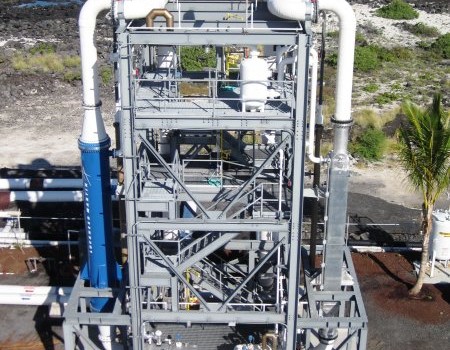
Developing OTEC Pilot Schemes
Companies such as Lockheed Martin are working with Makai Ocean Engineering and leading the way in designing and operating pilot schemes such as these, which are demonstrating ever greater commercial and technological feasibility. The principles behind Hawaii Design Test Facility are all about making the forward steps to achieve the world’s first commercially viable 100MW OTEC power plant.
OTEC Test Facility Hawaii
In 2011, Makai Ocean Engineering completed tests of the first OTEC testing facility on the island of Hawaii, USA. The testing facility consisted of designing and building a heat exchanger which is one of the key components in OTEC technology. This is where warmer and colder water are allowed to flow in and out to warm-up and cool the low temperature liquid required in the process. Makai Ocean Engineering was perfectly placed to build this facility, leveraging from Natural Energy Laboratory of Hawaii’s (NELHA’s) existing deep seawater piping infrastructure, which is absolutely essential for this technology to work effectively.
At the NELHA, a 40ft tall tower was built, including the heat exchanger, which is the single most expensive component in this technology (small efficiency gains in the heat exchanger technology can make great leaps in lowering the cost). The tower facility supports evaporators, condensers, sea water piping and accurately allowing the ammonium fluid to flow through the system.
OTEC Funding
The funding pot unlike those that have been demonstrated in other case studies is coming from public or research bodies due to a lack of fully commercially available projects. In this case the funding has been provided by the Naval Facilities Engineering Command and the Office of Naval Research.
OTEC technology has been proven to have a minimal impact on the environment. In this case of heat exchangers, there is zero impact on the environment (the testing of the heat exchangers, involving NELHA’s state of the art deep seawater infrastructure, has been proven to have no impact on the local marine ecosystem around it).












No Comments yet! Be the first one.